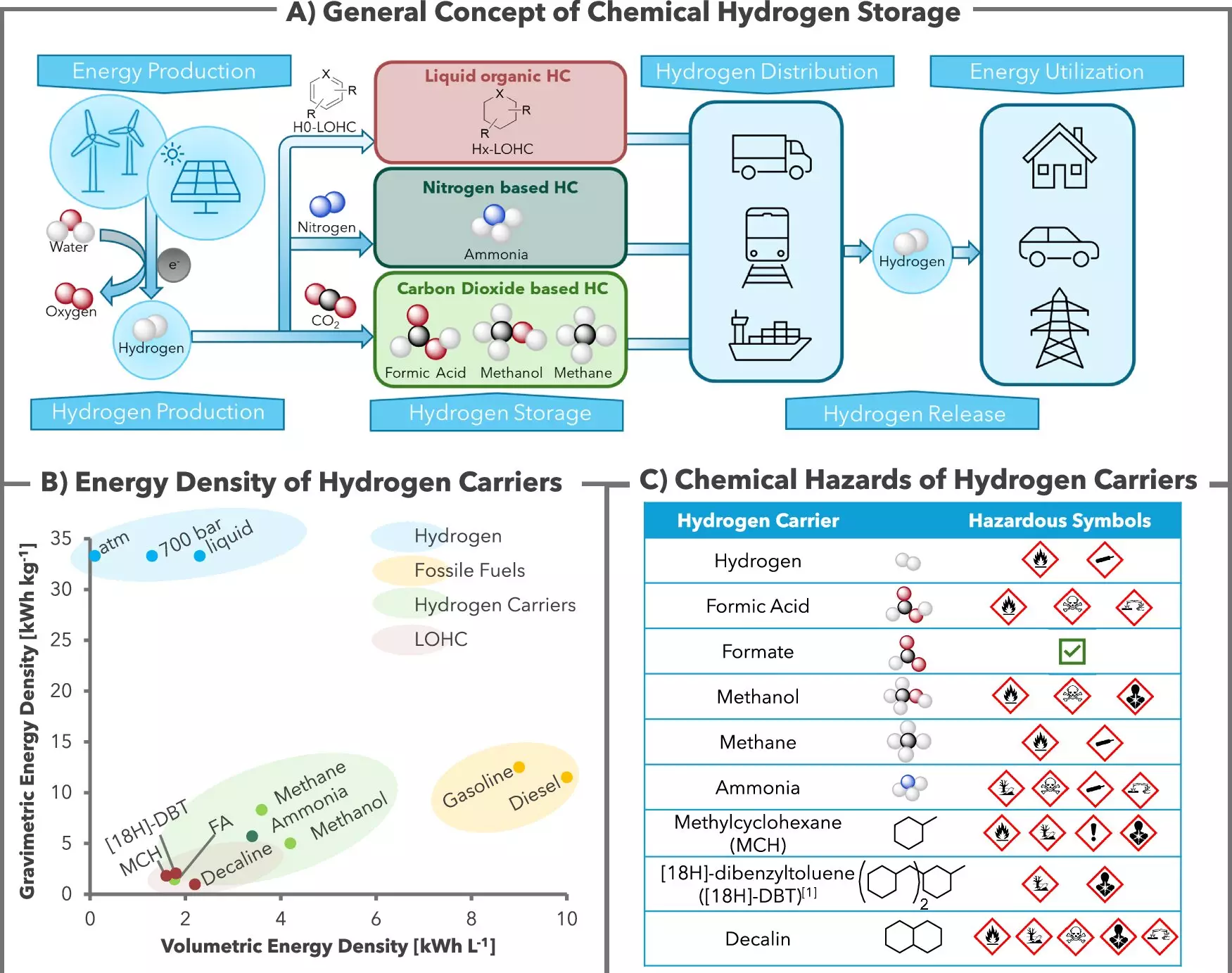The quest for cleaner, renewable energy sources is at the forefront of global efforts to combat climate change, making hydrogen storage a pivotal area of research and innovation. In a significant advancement, scientists at the Leibniz Institute for Catalysis (LIKAT) and the company H2APEX have unveiled a promising method for chemically storing hydrogen safely. Their findings, published in Nature Communications, highlight a novel approach that utilizes everyday substances to address the challenges associated with hydrogen’s volatility and combustibility.
Hydrogen is often heralded as a cleaner alternative to traditional fossil fuels, with potential applications ranging from transportation to large-scale energy storage. However, its high flammability and low density pose considerable challenges for safe storage and transport. To mitigate these risks, researchers have been exploring various methods for solid and liquid hydrogen storage, but many current solutions can be complex and costly.
The breakthrough from LIKAT and H2APEX centers on the development of a homogeneous catalyst system that binds hydrogen to potassium bicarbonate, a safe and stable compound commonly found in baking soda. This chemical binding transforms hydrogen from a reactive gas into formate, a benign salt of formic acid. The researchers emphasize the reversibility of this reaction: hydrogen can be released from formate on-demand, using the same catalyst in a controlled environment. Dr. Rui Sang and Ph.D. student Carolin Stein stress the importance of this reversible process, as it allows for straightforward storage and retrieval.
At the heart of this technology lies a ruthenium catalyst, a commercially accessible compound that facilitates the critical reactions involved in binding and releasing hydrogen. Conducted at a stable temperature of around 60°C, the process occurs within a solution that contains all necessary components—hydrogen, bicarbonate, and the catalyst itself. Dr. Sponholz from H2APEX outlines how manipulating the pressure when adding hydrogen determines whether it will bond with bicarbonate to form formate or be released from it.
The advantages of this innovative energy storage system are manifold, especially when compared to other alternatives like methanol, ammonia, or methane. While these substances may serve as storage mediums, formic acid salts present a safer and more energy-efficient option. Furthermore, they highlight the potential for formate to be easily stored in conventional plastic containers, enabling transportation akin to that of everyday liquids such as milk or diesel fuel.
The researchers envision their formate-based storage system as especially beneficial for rural or decentralized energy applications. As renewable energy sources like wind and solar produce electricity, surplus energy can be harnessed to generate green hydrogen through electrolysis. This hydrogen can then be chemically stored as formate, allowing for energy to be retained and utilized on-demand, much like a battery.
The focus of ongoing research is to maximize hydrogen storage within the formate, a parameter influenced by the storage density and solubility of the chosen salt. After conducting a thorough assessment of various options, including considerations of toxicological and environmental impacts, the research team opted for potassium as the cation for the storage solution.
One of the standout features of this hydrogen storage method is its remarkable CO2-neutral profile. In traditional hydrogen recovery processes, some bicarbonate decomposes, releasing CO2 into the atmosphere. However, the system developed by LIKAT and H2APEX captures and retains CO2 permanently, ensuring that the process does not contribute to greenhouse gas emissions. As a result, pure hydrogen can be safely retrieved from this system, making it suitable for direct use in fuel cells without the need for extensive purification steps.
In a demonstration of efficacy, the research team conducted 40 consecutive cycles of hydrogen storage and release over six months, producing 50 liters of hydrogen with an impressive purity rate of 99.5% while utilizing minimal amounts of the ruthenium catalyst. These encouraging results have laid the groundwork for H2APEX to develop a larger demonstrator model, with plans for commercialization targeted for late 2025.
The ongoing exploration of hydrogen as a viable energy source represents a critical stride toward the realization of sustainable energy solutions. The innovative work at LIKAT and H2APEX not only sheds light on the effective and safe storage of hydrogen but also opens exciting avenues for its application in a future green economy. As research continues and scales up towards industrial application, hydrogen, the element represented by the symbol ‘H’, may transform into a symbol of hope for achieving a sustainable and eco-friendly energy transition.


Leave a Reply